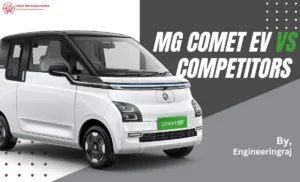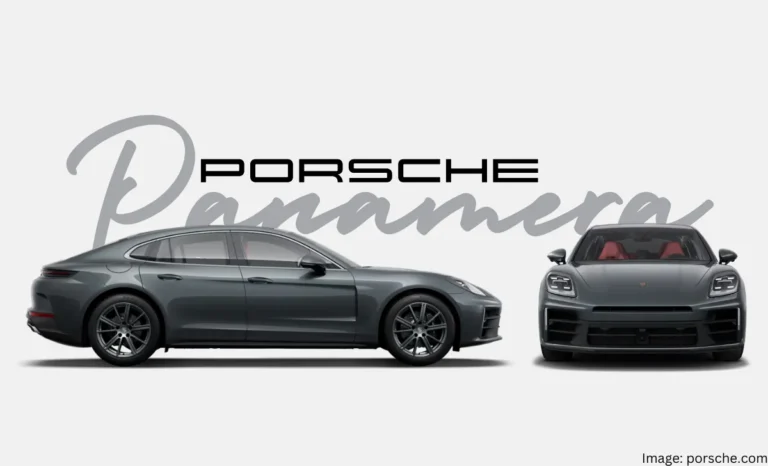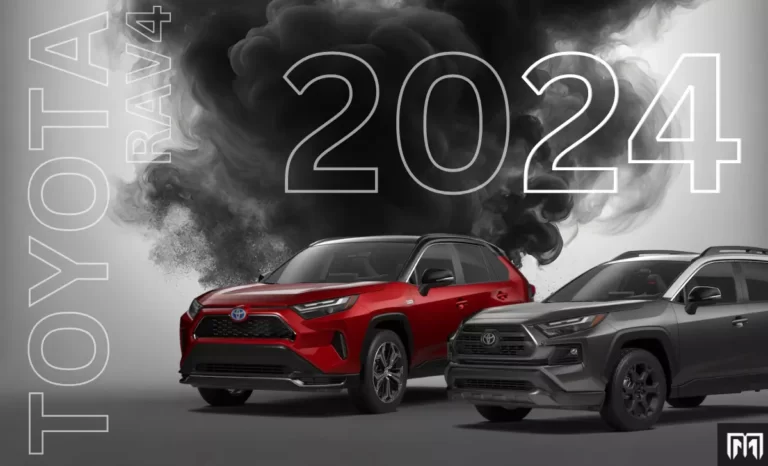MG has recently made a splash in the Indian automotive market with the launch of its Comet EV. With the Tata Tiago EV having already hit the market, it seems that electric vehicles are gaining popularity in the budget end of the market, with Citroen also joining in the competition with its eC3. So, how do these three vehicles stack up against each other? Let’s take a closer look.
In this article
- 1 In this article
- 2 Looking to compare the dimensions of the MG Comet EV, Tata Tiago EV, and Citroen eC3?
- 3 In this comparison between the MG Comet EV, Tata Tiago EV, and Citroen eC3, we’ll be taking a closer look at their battery, range, and performance.
- 4 Looking to compare the charging times of the MG Comet EV, Tata Tiago EV, and Citroen eC3? Here’s what you need to know.
- 5 Are you in the market for an electric vehicle (EV) and looking for a budget-friendly option?
- 6 eC3 Live vs Comet EV Base vs Tiago EV XZ Plus Tech LUX Fast Charge | Compare
In this article
Looking to compare the dimensions of the MG Comet EV, Tata Tiago EV, and Citroen eC3?
Let’s take a closer look. Starting with length, the MG Comet EV comes in at 2,794mm, making it the shortest vehicle in the group. The Tata Tiago EV and Citroen eC3, on the other hand, measure 975mm and 1,187mm longer than the Comet EV, respectively.
Moving on to width, the MG Comet EV is the narrowest, measuring 1,505mm. The Tata Tiago EV and Citroen eC3, on the other hand, are wider by 172mm and 228mm, respectively.
When it comes to height, the MG Comet EV takes the lead, measuring 1,640mm. The Tata Tiago EV and Citroen eC3 are shorter by 104mm and 36mm, respectively.
In terms of wheelbase, the MG Comet EV comes in at 2,010mm, which is considerably shorter than the Tata Tiago EV and Citroen eC3, which have wheelbases that are 390mm and 530mm longer, respectively.
The MG Comet EV also has the smallest wheel size, riding on 12-inch wheels, and is the lightest vehicle of the three, weighing in at 501kg, which is 340kg and 501kg less than the Citroen eC3 and Tata Tiago EV, respectively.
However, the eC3 and Tiago EV have an advantage when it comes to storage space, with the Comet EV offering very limited storage space in the boot. The rear seats of the Comet EV will need to be folded down to make room for additional storage.
Also, Read:
Top 10 Best 7-Seater Cars in India
In conclusion, while the MG Comet EV may be the smallest and lightest vehicle in this comparison, it does have some limitations when it comes to storage space. The Tata Tiago EV and Citroen eC3, on the other hand, offer more storage space but are larger and heavier vehicles.
In this comparison between the MG Comet EV, Tata Tiago EV, and Citroen eC3, we’ll be taking a closer look at their battery, range, and performance.
Starting with the powertrain, the Comet EV and eC3 come with only one option, while the Tiago EV has two, which are classified as Medium Range and Long Range. All three cars use permanent magnet synchronous motors, but the Tiago EV Long Range is the most powerful, putting out 75hp. In contrast, the Comet EV makes the least output among the trio.
Moving on to torque, the eC3 has the highest output figure at 143Nm, which is 29Nm more than the Tiago EV Long Range’s 114Nm. Interestingly, the Comet EV’s torque figure is the same as the Tiago EV Medium Range. We are yet to see how fast the Comet EV accelerates since MG has not given a claimed 0-60kph time. However, even though it makes more torque, the eC3 has a slower 0-60kph time (claimed) than even the Tiago EV Medium Range by 0.6 seconds.
When it comes to the battery, the Comet EV has the smallest size at 17.3kWh but claims a range of 230km, which is only 20km less than the Tiago EV Medium Range. The eC3 has the largest battery pack amongst the trio, at 29.2kWh, offering the most range at 320km as per the MIDC cycle. Meanwhile, the Tiago EV Long Range has a larger 24kWh battery, which can cover a distance of 315km on the MIDC cycle.
In conclusion, each of these electric vehicles has its strengths and weaknesses. While the eC3 offers the most range, the Tiago EV Long Range has the most powerful motor. The Comet EV, on the other hand, sits somewhere in between with a decent range and torque output. Ultimately, the choice of which car to go for will depend on individual preferences and requirements.
Looking to compare the charging times of the MG Comet EV, Tata Tiago EV, and Citroen eC3? Here’s what you need to know.
First off, the eC3 is the slowest of the bunch when it comes to charging. It takes a total of 10 hours and 30 minutes to charge from 0-100 percent using a DC fast charger. That’s quite a bit longer than the other two options.
On the other hand, both the Tiago EV and Comet EV offer much faster charging times via a DC fast charger. In fact, both models can be charged from 10-100 percent in a claimed 57 minutes. That’s impressive and makes them both good options for drivers who need to quickly top up their EV’s battery.
However, it’s worth noting that the Comet EV is only marginally slower than the Tiago EV Medium Range when charging via a 3.3kW AC charger. Meanwhile, the Tiago EV Long Range version takes 8 hours and 40 minutes to charge from 10-100 percent via the same charger.
If you’re looking for even faster charging times for your Tiago EV, Tata Motors offers an optional 7.2kW AC fast charger. With this option, the Tiago EV Medium Range can charge from 10-100 percent in just 2 hours and 36 minutes, while the Long Range version takes 3 hours and 36 minutes.
In conclusion, while the eC3 may be the slowest to charge, both the Tiago EV and Comet EV offer impressive charging times, especially when using a DC fast charger. And if you opt for the Tiago EV and choose the optional 7.2kW AC fast charger, you can further reduce your charging times.
Also, Read:
Top 10 Safest Cars in India 2023
Are you in the market for an electric vehicle (EV) and looking for a budget-friendly option?
MG has recently introduced the Comet EV in India, with an initial cost of Rs 7.98 lakh (ex-showroom). However, the prices for other versions of this three-door electric vehicle will be revealed at a later date. Currently, the Comet EV is priced lower than the Tiago EV and eC3, starting at a reduced cost of Rs 71,000 and Rs 3,52,000, respectively. Notably, MG and Citroen are the only brands to provide personalized cosmetic options for the Comet EV and eC3, respectively.
eC3 Live vs Comet EV Base vs Tiago EV XZ Plus Tech LUX Fast Charge | Compare
| eC3 | Comet EV | Tiago EV | |
|---|---|---|---|
| Battery Capacity | 29.2 kWh | 17.3 kWh | 24 KWh |
| Motor Type | Permanent Magnet Synchronous Motor | Permanent Magnet Synchronous Motor | Permanent Magnet Synchronous Motor |
| Max Power | 56.22bhp | 41.42bhp | 73.75bhp |
| Range | 320 km/charge | 230 Km | 315 km/charge |
| Max Torque | 143Nm | 110Nm | 114Nm |
| Emission Norm Compliance | ZEV | ZEV | ZEV |
| Transmission | Automatic | Automatic | Automatic |
| Suspension Front | MacPherson Strut with Coil Spring | McPherson Strut | Independent lower wishbone Mcpherson dual path |
| Suspension Rear | Rear Twist Beam with Coil Spring | Multi-Link Coil Suspensio | Rear twist beam with coil spring |
| Brakes Front | Disc | Disc | Disc |
| Brakes Rear | Drum | Drum | Drum |
| Minimum Turning Radius | 4.98 | 4.2 | 5.1 |
| Tyre Size | 195/65 R15 | 145/70 R12 | 175/65 R14 |
| Wheel Size | 15 | 12 | 14 |
| Seating Capacity | 5 | 4 | 5 |
| Doors | 5 | 2 | 5 |
| Boot Space | 315 Liters | … | 240 Liters |
| Airbags | Driver and Passenger | Driver and Passenger | Driver and Passenger |




